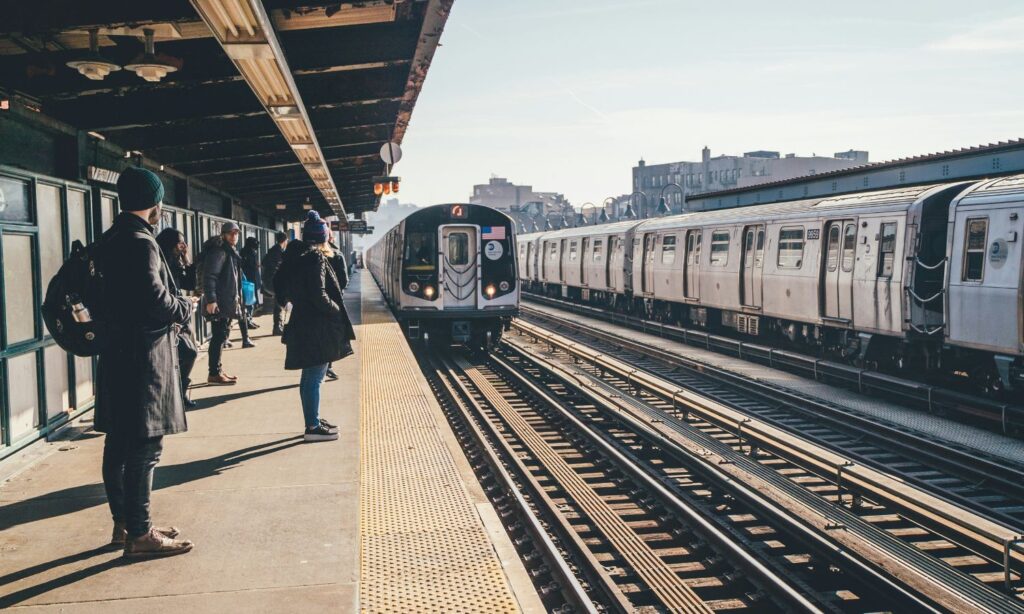Last week, I interviewed a patient who was hospitalized with a severe and persistent asthma attack. Mr. S. had been perfectly healthy until he started having respiratory symptoms a year ago. She described her difficulty breathing on her worst day as feeling “like an elephant was sitting on my chest.” I asked about her smoking history and exposure to potential indoor irritants (dust, mold, etc.), all of which she denied. Confused, I decided to ask her about her environmental exposures. She said she moved into her new apartment around the time her symptoms started. Suspicious of her relationship, I asked about the location of her apartment and the traffic congestion in the area. Ms. S revealed that she actually lives right next to the main road and that she takes daily walks around the neighborhood to keep active. Although it is impossible to conclude a causal relationship in her case, I was still struck by the potential link between tailpipe emissions and respiratory health.
All I can do in the doctor's office is make sure she's receiving the right medication. But as a future health care provider, I want to speak out outside the doctor's office to prevent future outbreaks of diseases caused by exposure to harmful environments. We have the power to change that now.
Vehicles emit 1.5 billion tonnes of greenhouse gases each year, making the transportation sector the largest contributor to greenhouse gas emissions across all sectors. Traditional cars, trucks, and buses also emit particulate matter, volatile organic compounds, carbon monoxide, and sulfur dioxide, all of which are associated with respiratory irritation, infections, and chronic disease. There is mounting evidence that these pollutants increase the risk of childhood asthma, non-asthmatic respiratory conditions, impaired lung function, and cardiovascular disease morbidity and mortality. I am seeing this mixture of pollutants have a direct impact on the severity of respiratory illness in patients, knowing that this same source of pollution is destroying the health of our planet.
But it doesn't have to be this way. We can transform the way we travel and build a future with clean air and clean lungs.
Expanding access to public transportation has many benefits
One of the key, and sometimes overlooked, solutions to reducing vehicle pollution is public transportation. Vehicle electrification remains important. But choosing to take a bus or train instead of driving has huge benefits for individuals, communities and the environment. Research shows that in this country, just a one-mile bus ride has, on average, 30% less impact on climate change than a solo trip in a gas-powered car. Additionally, public transit use increases daily physical activity, as commuters often walk or bike to public transit stops. Thus, choosing public transport has the side benefit of reducing the risk of obesity, respiratory disease, and cardiovascular disease. Finally, increased access to public transportation has been shown to improve older adults' mental health and reduce feelings of social isolation.
For my patients and communities to fully realize these wide-ranging benefits, decision-makers must invest in public transport as a public good and treat it as a core solution to climate change and at risk of infection. It is important that we choose to see it as a form of preventive medicine for people. Respiratory disease caused by pollutants from the exhaust pipe. Transportation services are chronically underfunded, and this vicious cycle has partially led to the health and climate outcomes we see today.
The good news is that there is now a huge opportunity to invest in transportation systems. Billions of dollars in federal infrastructure funding are flowing to states, and with enough public input, states can decide to invest in transportation options that benefit our health and the health of our climate. Additionally, Congress is finally starting to think seriously about the need to fund transportation projects. In January 2024, Congressman Hank Johnson introduced HR 7039, the Strengthening Communities Through Better Transportation Act. If passed, the bill would authorize $20 billion in transportation aid annually over four years. The operational side of running a transit system is critical, funding maintenance costs, salaries for bus and train drivers, and increased frequency of service. In fact, more than 70% of transit costs go toward operations rather than capital expenditures (i.e., building new rail lines). Analysis shows that this bill has the potential to provide the investments needed to provide nearly 100 million new hours of transportation service across the country, in urban, suburban, and rural areas.
Investing in reliable and accessible transportation services is essential not only for the 10 million American households that don't own a car, but also as a foundation for thriving communities and improving the quality of life for everyone. This service is essential to increase access to healthcare, nutritious food, employment, and social networks. Therefore, it is critical that local, state, and national decision makers invest in public transportation infrastructure and operations. There's a lot of room for improvement. It is my hope as a medical student and future physician that the shift toward increased use of public transportation begins now, in the name of human health and a healthier planet.


